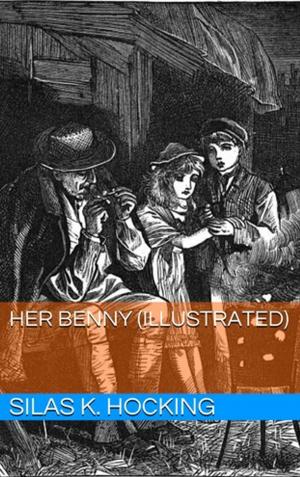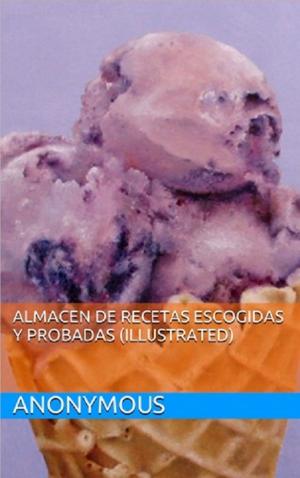Encyclopaedia Britannica, 11th Edition, Volume 17, Slice 2 (Illustrated)
Nonfiction, Reference & Language, Reference, Encyclopedias, Research| Author: | Various | ISBN: | 1230000154243 |
| Publisher: | Lost Leaf Publications | Publication: | July 23, 2013 |
| Imprint: | Language: | English |
| Author: | Various |
| ISBN: | 1230000154243 |
| Publisher: | Lost Leaf Publications |
| Publication: | July 23, 2013 |
| Imprint: | |
| Language: | English |
THE ENCYCLOPAEDIA BRITANNICA
A DICTIONARY OF ARTS, SCIENCES, LITERATURE AND GENERAL INFORMATION
ELEVENTH EDITION
VOLUME XVII SLICE II
Articles ranging from L - M
URAY CAVERN, a large cave in Page county, Virginia, U.S.A., 39° 35′ N. and 78° 17′ W., near the village of Luray, on the Norfork & Western railway. The valley, here 10 m. wide, extends from the Blue Ridge to the Massanutton Mountain. The ridges lie in vast folds and wrinkles; and elevations in the valley are often found to be pierced by erosion. Cave Hill, 300 ft. above the water-level, had long been an object of local interest on account of its pits and oval hollows or sink-holes, through one of which, on the 13th of August 1878, Andrew J. Campbell and others entered, thus discovering the cavern now described.
The Luray cavern does not date beyond the Tertiary period, though carved from the Silurian limestone. At some period, long subsequent to its original excavation, and after many large stalactites had grown, it was completely filled with glacial mud charged with acid, whereby the dripstone was eroded into singularly grotesque shapes. After the mud had been mostly removed by flowing water, these eroded forms remained amid the new growths. To this contrast may be ascribed some of the most striking scenes in the cave. The many and extraordinary monuments of aqueous energy include massive columns wrenched from their place in the ceiling and prostrate on the floor; the Hollow Column, 40 ft. high and 30 ft. in diameter, standing erect, but pierced by a tubular passage from top to bottom; the Leaning Column nearly as large, undermined and tilting like the campanile of Pisa; the Organ, a cluster of stalactites in the chamber known as the Cathedral; besides a vast bed of disintegrated carbonates left by the whirling flood in its retreat through the great space called the Elfin Ramble.
The stalactitic display exceeds that of any other cavern known. The old material is yellow, brown or red; and its wavy surface often shows layers like the gnarled grain of costly woods. The new stalactites growing from the old, and made of hard carbonates that had already once been used, are usually white as snow, though often pink, blue or amber-coloured. The Empress Column is a stalagmite 35 ft. high, rose-coloured, and elaborately draped. The double column, named from Professors Henry and Baird, is made of two fluted pillars side by side, the one 25 and 128 the other 60 ft. high, a mass of snowy alabaster. Several stalactites in the Giant Hall exceed 50 ft. in length. The smaller pendants are innumerable; in the canopy above the Imperial Spring it is estimated that 40,000 are visible at once.
THE ENCYCLOPAEDIA BRITANNICA
A DICTIONARY OF ARTS, SCIENCES, LITERATURE AND GENERAL INFORMATION
ELEVENTH EDITION
VOLUME XVII SLICE II
Articles ranging from L - M
URAY CAVERN, a large cave in Page county, Virginia, U.S.A., 39° 35′ N. and 78° 17′ W., near the village of Luray, on the Norfork & Western railway. The valley, here 10 m. wide, extends from the Blue Ridge to the Massanutton Mountain. The ridges lie in vast folds and wrinkles; and elevations in the valley are often found to be pierced by erosion. Cave Hill, 300 ft. above the water-level, had long been an object of local interest on account of its pits and oval hollows or sink-holes, through one of which, on the 13th of August 1878, Andrew J. Campbell and others entered, thus discovering the cavern now described.
The Luray cavern does not date beyond the Tertiary period, though carved from the Silurian limestone. At some period, long subsequent to its original excavation, and after many large stalactites had grown, it was completely filled with glacial mud charged with acid, whereby the dripstone was eroded into singularly grotesque shapes. After the mud had been mostly removed by flowing water, these eroded forms remained amid the new growths. To this contrast may be ascribed some of the most striking scenes in the cave. The many and extraordinary monuments of aqueous energy include massive columns wrenched from their place in the ceiling and prostrate on the floor; the Hollow Column, 40 ft. high and 30 ft. in diameter, standing erect, but pierced by a tubular passage from top to bottom; the Leaning Column nearly as large, undermined and tilting like the campanile of Pisa; the Organ, a cluster of stalactites in the chamber known as the Cathedral; besides a vast bed of disintegrated carbonates left by the whirling flood in its retreat through the great space called the Elfin Ramble.
The stalactitic display exceeds that of any other cavern known. The old material is yellow, brown or red; and its wavy surface often shows layers like the gnarled grain of costly woods. The new stalactites growing from the old, and made of hard carbonates that had already once been used, are usually white as snow, though often pink, blue or amber-coloured. The Empress Column is a stalagmite 35 ft. high, rose-coloured, and elaborately draped. The double column, named from Professors Henry and Baird, is made of two fluted pillars side by side, the one 25 and 128 the other 60 ft. high, a mass of snowy alabaster. Several stalactites in the Giant Hall exceed 50 ft. in length. The smaller pendants are innumerable; in the canopy above the Imperial Spring it is estimated that 40,000 are visible at once.















